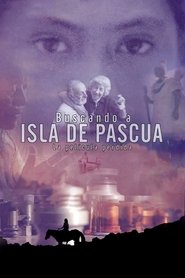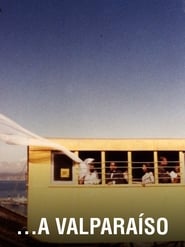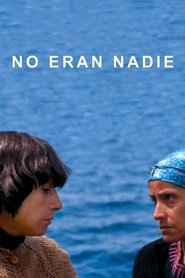detail profile sergio bravo

Sergio Bravo
Sergio Bravo Ramos
atau dikenal sebagai
Riwayat Hidup
Sergio Bravo Ramos (Los Andes, May 13, 1927) was a Chilean documentary filmmaker and film and photography director.
He studied architecture at the University of Chile between 1952 and 1956, and then film studies at the Film Institute of the Catholic University.
In 1955 he became a founding member of the Cine Club Universitario de la Federación de Estudiantes de Chile.
On July 8, 1957 he founded, along with filmmaker Pedro Chaskel, among others, the Experimental Film Center of the University of Chile, of which he was also the first director.
His first documentary short film Imágenes Antárticas was made in 1956.
The following year, in 1957, he published Mimbre, which featured the music of Violeta Parra and was awarded the "Diploma de Honor del Concurso de Filme de Arte UNESCO-Canada".
In this work of only 9 minutes, it reflects the daily life of a craftsman making basketry pieces.
He repeats the same simple style and the musical accompaniment of Violeta Parra in 1959 with Trilla, this time showing traditional peasant work, and also with Casamiento de Negros, reflecting the work of potters from the town of Quinchamalí.
The latter was also the first time Violeta was in front of the camera, and with which Bravo won the prize of the "Círculo de Críticos de Arte de Santiago" (Santiago Art Critics Circle).
In Láminas de Almahue, published in 1962, she documents the physical work and craftsmanship of the traditional construction of cartwheels, accompanied by the poetry of Efraín Barquero.
This experimental work of social criticism is considered her masterpiece.
In 1962 he restored the classic Chilean silent film El húsar de la muerte.
That same year he participated in the documentary A Valparaíso as assistant director to Joris Ivens.
In the early 1970s, due to the military dictatorship, he returned to his profession as an architect, although without completely abandoning his work as a filmmaker.
In 1979, in Chiloé, he began the clandestine recording of the feature film No eran nadie.
.
.
on the theme of Human Rights, but in 1983, with the work incomplete, he went into exile in Paris, where he edited and completed it, presenting it at various festivals such as Cannes, Berlin, Locarno, Moscow and Los Angeles.
On his return to Chile in 1999 he made the Mapuche-themed documentary Aquel ngüillatún; a color documentary in which he published the only images he himself recorded of the 1960 Valdivia tsunami.
In 2000 he organized and directed the first Mapuche Film Festival.
He was awarded the first "Pedro Sienna 2006 Lifetime Achievement Award" in recognition of his career.
In 2007 he made his last documentary Pan Minero.
Info Pribadi
Peran Yang Di Mainkan Sergio Bravo
 The documentary frames the reactions of...
The documentary frames the reactions of...Buscando Isla de Pascua, la película perdida 2014
The documentary frames the reactions of Rapa Nui's people following the screening of -at that time- a presumed lost film involving their territory.
 Poetic look at the history and...
Poetic look at the history and...Easter Island 1965
Poetic look at the history and mysteries of Easter Island, through its landscapes, its mythical sculptures, as well as its parties, ceremonies, with abundant songs and dances, which become the true guides of the documentary. Also noteworthy is the annexation of the island to Chile, thanks to Policarpo Toro, captain of the Chilean Navy.
 In 1962 Joris Ivens was invited to...
In 1962 Joris Ivens was invited to...Valparaiso 1964
In 1962 Joris Ivens was invited to Chile for teaching and filmmaking. Together with students he made …A Valparaíso, one of his most poetic films. Contrasting the prestigious history of the seaport with the present the film sketches a portrait of the city, built on 42 hills, with its wealth and poverty, its daily life on the streets, the stairs, the rack railways and in the bars. Although the port has lost its importance, the rich past is still present in the impoverished city. The film echoes this ambiguous situation in its dialectical poetic style, interweaving the daily life reality (of 1963) with the history of the city and changing from black and white to colour, finally leaving us with hopeful perspective for the children who are playing on the stairs and hills of this beautiful town.
 The different works and routines typical...
The different works and routines typical...Láminas de Almahue 1962
The different works and routines typical from the lands near the canal of Larmahuino (or Almahuino).
 On May 22 1960 an earthquake with an...
On May 22 1960 an earthquake with an...La respuesta 1961
On May 22, 1960, an earthquake with an intensity of 9.6 on the Richter Scale was recorded in the city of Valdivia, considered to date the largest and most violent earthquake ever recorded in the world. The cataclysm devastated the entire Chilean territory between Talca and Chiloé, which corresponds to more than 400,000 km. It resulted in the deaths of around three thousand people, while two million were left homeless. The film documents the efforts of a hundred workers in the face of the threat of the overflowing of Lake Riñihue.
 Montage documentary built on footage taken...
Montage documentary built on footage taken...Amerindia 1960
Montage documentary, built on footage taken during an expedition with the participation of writer Enrique Zorrilla, photographer Roberto Montandón and Leopoldo Castedo. Synthesis of a journey of one hundred thousand kilometers between Mexico and Tierra del Fuego around the heritage of the native peoples of Latin America.
 Two women tell each other about...
Two women tell each other about...